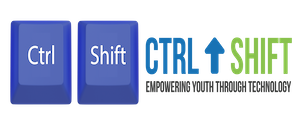The digital divide isn’t just about internet connections — it’s about opportunity. In Chicago’s underserved neighborhoods, students often attend schools with outdated equipment, overcrowded classrooms, and limited access to advanced technology education. Meanwhile, wealthier suburban schools benefit from higher funding, modern facilities, and built-in pathways to computer science, coding, and STEM enrichment. This inequity creates two very different futures for students and leaves too many young people unprepared for higher education and a digital first world.
The Challenge in Chicago
- Funding Disparities: Urban schools consistently operate with less funding per student compared to suburban districts, limiting access to computers, software, and trained instructors. This structural inequality has persisted for decades and remains one of the clearest indicators of student outcomes. (American Bar Association)
- Device Access Gaps: In schools serving mostly minority or low-income students, the average ratio is 4 students per computer. By contrast, in lower-minority, wealthier schools, the ratio drops to 3 students per computer, which translates to significantly more time for each student to gain familiarity and practice. (NCES data via Wikipedia)
- Quality of Tech Education: Even when devices are present, the way technology is used in classrooms differs drastically. In suburban districts, technology is often integrated into collaborative projects, independent research, and advanced computer science electives. In many inner-city schools, tech use is more basic, focused on testing platforms or remedial software, leaving students underprepared for college-level STEM work. (Springer study)
- Founding Partners: Learning Environment: Beyond technology itself, students in urban schools face overcrowded classrooms and outdated facilities, while suburban students often benefit from modern labs, STEM clubs, and direct access to extracurricular opportunities. This imbalance widens the gap in both academic skills and confidence. (American Bar Association)
Why Ctrl Shift Exists
Ctrl Shift was created to close this gap. We believe that underserved youth don’t lack talent — they lack access. Our purpose is to bring modern, hands-on digital education directly into Chicago’s inner-city neighborhoods.- We introduce students to digital foundations like Microsoft Office, ensuring they build basic proficiency that supports every subject in school.
- We expose them to coding and AI literacy, showing that advanced tech isn’t reserved for suburban schools or elite academies.
- We weave in leadership and confidence-building, because opportunity is unlocked not just by skills, but by the belief that you belong in the room where innovation happens.
